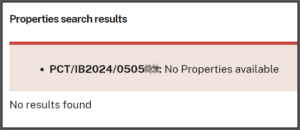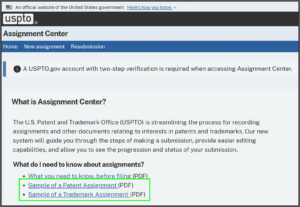(Update: the USPTO did fix the defect, but it took three months, and the USPTO did not do me the courtesy of letting me know, see blog article.)
This past Monday, February 5, 2024, was the big day that the USPTO launched its Assignment Center.
The USPTO failed to do any customer-side alpha or beta testing prior to launch day, despite having been invited to do so on November 12, 2023 (blog article).
When the USPTO belatedly revealed some of its training materials on January 29, 2024 (blog article), I predicted (see it here) that it would turn out that USPTO’s software developers had failed to handle correctly any PCT application that had been filed in a Receiving Office other than RO/US.
Sure enough, when the USPTO launched its Assignment Center on February 5, my prediction was fulfilled. It was impossible to record an assignment against any PCT application that had been filed in a Receiving Office other than RO/US.
The Assignment Branch lists two ways to get tech support for bugs in Ass. Center. A first way to get tech support is to send an email to assignmentcenter@uspto.gov . I did that on Monday, February 5. Four days have passed and nobody at the USPTO has answered that email. Nor, during those four days, did anybody at the USPTO fix the bug reported in that email.
A second way to get tech support is to place a telephone call to the Assignment Branch at +1-571-272-3350. I did that bright and early on Tuesday, February 6 (blog article). I waited on hold for some twenty minutes, eventually reaching a human being who claimed to be wholly unable to provide tech support, but who offered to “open a ticket”. So I received ticket number 1-849780117. Three days have passed and nobody at the USPTO has gotten back to me on that ticket. Nor, during those three days, did anybody at the USPTO fix the bug reported in that ticket.
Bright and early on Tuesday, February 6, I left a voice mail message for the manager of the Assignment Branch, a Joyce R. Johnson. I left a detailed voicemail message. Three days have passed and she has not returned my call. Nor, during those three days, did anybody at the USPTO fix the bug reported in that voicemail message to the manager.


